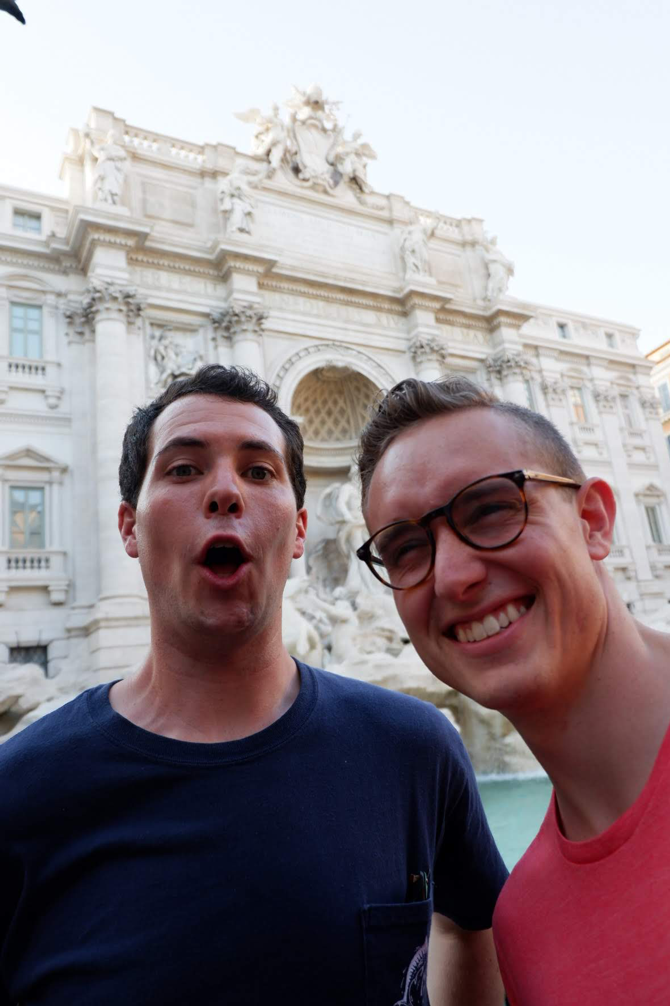BY ANDREA ZACHRICH
We went to Trevi Fountain on our first evening of our program here in Rome. I thought the history of the Trevi Fountain was fascinating, so I’m going to share it with you.
As with most things in Rome, the Trevi Fountain has an ancient, medieval, renaissance, baroque, and modern history. The ancient history begins with Marcus Agrippa, who was the right hand man of Augustus, the first emperor of Rome. He built an aqueduct called the Aqua Virgo that began up in the mountains and ended in the spot where the Trevi Fountain stands today. There is a myth about the name of the aqueduct, which means “Virgin Water”. The legend goes that when Marcus Agrippa was looking for a source for the aqueduct in the mountains, a virgin miraculously appeared, led him to the water source and then disappeared. Professor Gurval believes that the myth was made up after the aqueduct was named, but I think I prefer this story.

The aqueduct was function for a few hundred years until the fall of Rome in the fifth century. Many historians think that one of reasons Rome fell was because many of their aqueducts were destroyed. The city simply could not support that many people without a lot of water, and population quickly dropped from 1 million to 50 thousand.
The aqueduct was mostly forgotten in the Middle Ages. The next time it makes an appearance was during the time of the Renaissance. Pope Nicolas restores the aqueduct and seeks to build an ornate fountain on the location. However, the pope dies before he can commission a fountain, and no fountain is built until the mid 1700’s. The one that stands there today was dedicated in 1762 and designed by a Roman architect named Nicola Salvi. Sadly, he didn’t live long enough to see the fountain finished. The fountain was not particularly popular until movies such as Three Coins in a Fountain and La Dolce Vita featured it. Now, it is one of the most popular tourist attractions in Rome, and is currently the largest fountain in Rome.
The statue features the god ocean, and representations of abundance/prosperity and health as people. The facade behind the sculptures features an order of Corinthian columns with little apses for smaller statues.
The legend with this statue, popularized in the movie Three Coins in a Fountain, is that if you throw a coin with your right hand over your left shoulder into the fountain, it will bring you back to Rome.

Andrea Zachrich studied abroad in Rome, Italy, in Summer 2018: https://ieo.ucla.edu/travelstudy/italian-rome/



